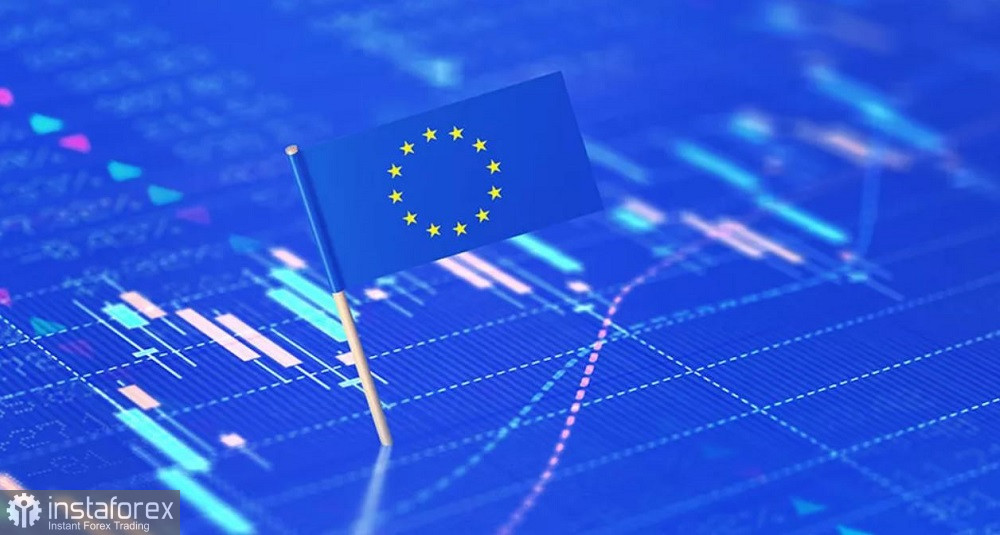The day's released PMI indices harmed the euro/dollar pair. At the beginning of the European session, traders once again approached the 9th figure's borders but were forced to turn back and take positions in the middle of the 8th price level.
Is it that bad?
In terms of the future, it should be recognized that nothing catastrophic has happened today; the release is contentious but not more. On the other hand, given that we are nearing the primary resistance level of 1.1000 and have reached multi-month highs, any concerns about the euro are now read against the longs for the pair. Therefore, although they cannot be characterized as failures, today's reports have not turned against EUR/USD bulls.

We can offer the following simplified analysis after summarizing the published figures: German indices showed a decline in manufacturing (the euro's most painful blow), but growth in the services sector. European indicators came out in the green, demonstrating positive dynamics in both the services sector and the field of production. French indicators showed growth in production but a decline in the services sector. It is impossible to discuss the possibilities of the southern movement in this situation since, as you can see, the release structure is diverse. The northern movement has been disrupted by the PMI indices, but at the same time, traders are still constrained to trade in the range of 1.0850–1.0930, deferring to more advantageous times the idea of breaking through the price resistance of 1.0950 (the upper line of the Bollinger Bands indicator on the daily chart) and consequently, the psychologically significant level of 1.1000.
Germany, France, and the Eurozone PMI
Back to the reports, though. As a result, the German manufacturing PMI index was 47.0, with a predicted increase to 48.0. When the indicator reached 47.1 points in December, it had been on an increasing trend for the preceding three months. Therefore, today's loss (the smallest compared to the previous month) came as a rude surprise to EUR/USD purchasers. However, in general, we may state that this release's component was released in January at a level comparable to December. However, the German services sector's business activity index continued to increase, increasing to 50.4 points (the best result since June last year).
The French indications followed the German ones' course exactly. On the other hand, the French manufacturing sector's business activity index rose, breaking the crucial 50-point threshold for the first time since August of last year (reaching 50.8 points). For the past three months, the indicator has steadily increased. The PMI index fell in the service sector and reached a low of 49.2 points. This indicator has nearly been at the same level since November of last year, within 49 points.
The PMI indicators across all of Europe are all "green in hue." The manufacturing sector's business activity index increased to 48.8 points, the highest level since August 2022. (The upward trend has been recorded for the third month in a row.) For the first time since July of last year, the PMI index for the services sector surpassed the critical level of 50, rising to a reading of 50.7.
As we can see, the numbers that have been released are not at all dire. EUR/USD traders concentrated their attention on the unexpectedly strong German PMI manufacturing index. However, the overall picture is generally more or less acceptable and does not support the growth of the southern movement (however, it also does not contribute to the development of the northern trend).
Yannis Stournaras, the head of the Central Bank of Greece, put some pressure on the duo today by stating that the adjustment to interest rates "should be gradual against the background of decreasing economic development in the European region." The statements made by Stournaras, however, cannot be seen as reflecting the stance of the European regulator as a whole when we take into account the rhetoric of the other ECB officials. For instance, Peter Kazimir, another ECB representative, recently stated that the central bank has to implement two additional rate increases of 50 basis points. Christine Lagarde has also made hawkish arguments before (according to her, rates should "rise significantly and remain at restrictive levels for as long as necessary"). Along with the ECB president and Peter Kazimir, many other Central Bank officials, including Martin Kazaks, Isabel Schnabel, Robert Holzman, Olli Rehn, and Francois Villeroy de Galhau, endorsed the hawkish policy.
Conclusions
The PMI indices that were reported today weakened the wave of EUR/USD buyers, but they did not turn into allies of the pair's sellers. In preparation for the upcoming information impulses, traders withdrew and stopped moving. Let me remind you that the Fed-Richmond Manufacturing Index and the Index of Business Activity in the US Manufacturing Sector will be published today during the American session (both indicators, according to forecasts, should reflect negative dynamics). However, Thursday and Friday will see the publication of the week's major releases (data on US GDP growth in the 4th quarter of 2022 and the base PCE index). These reports will disappoint dollar bulls, even if they come out at the predicted level, according to early projections (not to mention the "red zone").
Therefore, despite the southern price fall, short positions on the EUR/USD pair remain dangerous. The pair is most likely to keep trading in the range of 1.0850-1.0930 in the medium term while remaining optimistic. If the American statistics come out in the negative territory, allowing buyers to resume activity, break through the upper bound of this price corridor, and test it, the nearest resistance level of 1.0950, which corresponds to the upper line of the Bollinger Bands indicator on the D1 timeframe, can be tested.
 English
English 
 Русский
Русский Bahasa Indonesia
Bahasa Indonesia Bahasa Malay
Bahasa Malay ไทย
ไทย Español
Español Deutsch
Deutsch Български
Български Français
Français Tiếng Việt
Tiếng Việt 中文
中文 বাংলা
বাংলা हिन्दी
हिन्दी Čeština
Čeština Українська
Українська Română
Română

